By Capt. Don Sanders
Special to NKyTribune
The riverboat captain is a storyteller, and Captain Don Sanders shares the stories of his long association with the river — from discovery to a way of love and life. This part of a long and continuing story was first told in March, 2019. See below how to order Captain Don’s historically significant illustrated hardback book, a collection of his storytelling, The River.
Perhaps, the most versatile, all-around person on a riverboat crew is the deckhand. They come in all shapes, sizes, colors, degrees of intelligence, and now, sex. Women, as well as men, can occasionally, be seen tossing lines, sooging decks, painting, making locks, and whatever else the mate or captain has in mind to accomplish in what was an all-male world not so long ago. To perform these various tasks, the deckhand has a vast array of tools from which to choose. Let’s explore a few in the passenger-carrying boat world which may be different in degrees than in the realm of “towboating,” where barge-loads of cargo are carried instead of hauling rubes on the hoof.
Rope, or Line.
Natural fibered grass ropes are also referred to as “Manila” or “hemp,” and “Sisal” lines. Fibers of the abaca plant, produced in the Philippines, are the parent threads of Manila, or hemp line. Sisal line is braided from the fibers of the agave plant cultivated in Mexico and South America and is weaker than Manila. Cotton provides the threads for some natural lines. Rope line made from a strain of the hemp plant different from the variety grown for marijuana is prized for its fibers and not its THC content, the chemical that gives “weed” its buzz.

Polyester, polypropylene, and some “super-duper” new substances may provide the materials for some synthetic lines, but generally, nylon makes up the bulk of these varieties of lines. Nylon considered the strongest, has the greatest stretching capabilities of the synthetics, but it loses up to a quarter of its strength when wet, and is expensive.
Speaking of grass line reminds me of the two long-haired deckhands sitting on a coil of line on
the bow of the DELTA QUEEN in those glorious halcyon hippie days of the 1970s when a little
old lady standing at the railing on the Cabin Deck above them suddenly leaned over and asked:
“Excuse me young men, but what is that rope you’re sitting on made of?”
“Hemp,” one of the boys replied to the unexpected question.
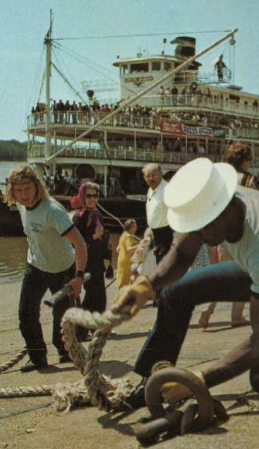
“Is that the same as marijuana?”
“No, mam, if it was, it would be all smoked up!”
Shackles
On a passenger boat making bank landings at towns along the river, heavy steel shackles sometimes called a “clevis,” but only ashore and never amongst the inland marine set, are used to secure the eye of a line to a ring, pin, or even around a tree. Care has to be taken if a deckhand tosses a shackle from the landing stage onto concrete or cobblestone-paved landings, as the shackle will bounce and may damage a vehicle or pedestrian parked or standing onshore. But in my deckhand days, I preferred a stout wooden “toggle bar” instead of a shackle.
Deckhand Robert”Bob” Sikes Secures the Headline with a Shackle as I Watch From the Wing Bridge of the DELTA QUEEN. 1972
Toggle Bars, or Toggles.
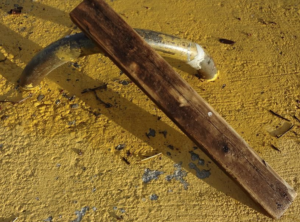
Toggle bars, usually made of sturdy oak with a rope grommet splice the opposite and the opposite end is tapered to allow the toggle to pass more easily through a bight, or eye, of a line, are my preferences for securing the bitter end of a mooring line to a fastener. Another favorite material for toggle bars are lengths of steel pipe. Although steel is undoubtedly stronger than even White Oak, the tie must still be properly made for the line to take the burden of the strain, rather than the toggle. A metal pipe toggle can easily slip through the eye before the line gets nice and tight around a tree, tied to a ring bolt, or whatever else is convenient and will hold a boat. Rough-cut wooden toggles have less a tendency to slip their bonds, so my preference is the use of stout oak for toggle bars.
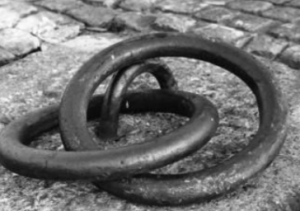
The Toggle Bar is also the deckhand’s friend whenever a nasty fight erupts on the riverboat.
They’ve busted more than one head. And there is comfort having one in hand standing on an unfriendly shore letting the lines loose after a dark, post-midnight Moonlight Ride when everyone milling around the landing is “likkered-up” and spoiling for a fight because the fun’s over, and there’s nothing else to do in some nowhere, backwoods hick town on whatever river.
Broom, Mop, Scraper, and Paint Brush
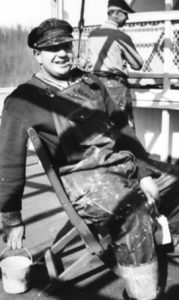
Whenever a deckhand is not showing off on the head of a riverboat during landings, locks, or departures, he/she is most useful using these tools, for it is the lot of the deck department to keep a boat clean, safe, and pristine – at least that was the norm on any boat where I served or was in charge. The novice hand soon learns to wield these appliances in ways their mothers never understood. Quite often, the most proficient master of these implements is the Captain who likely started as a deckhand and worked his/her way through the ranks and into the little house atop the roof of the boat, as evidenced in the photo of Captain Tom Greene.
Soogie Water, Brush, and Rag
My long-time mentor and friend, Captain Clarke C. “Doc” Hawley firmly believed in the mantra, “Paint when the weather is dry – and ‘sooge’ when it’s raining.” Webster defines the word sooge as: “SOOGE (verb): To clean thoroughly, as in scrubbing, mopping, and wiping down walls.”
“Soogie water” is scrub water specially prepared to remove dirt, grime, grease, and oils without softening and dissolving the paint off the bulkheads. Any temperature above 40-degrees Fahrenheit is considered suitable for sooging which gives an adequate margin for scrubbing in the rain instead foundering in the snow. To the uninformed, sooging in the rain is far more effective than cleaning in dry weather. Try washing your car when it’s raining, and you will see what I am saying is true. The CLYDE. Is an example of a well-sooged riverboat.
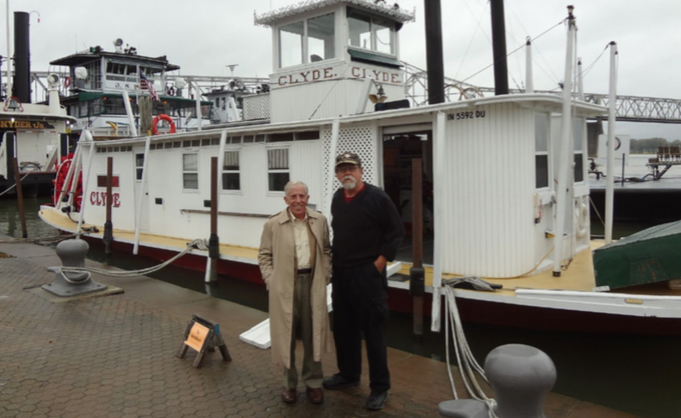
Captain Don Sanders is a river man. He has been a riverboat captain with the Delta Queen Steamboat Company and with Rising Star Casino. He learned to fly an airplane before he learned to drive a “machine” and became a captain in the USAF. He is an adventurer, a historian, and a storyteller. Now, he is a columnist for the NKyTribune and will share his stories of growing up in Covington and his stories of the river. Hang on for the ride — the river never looked so good.
• • • • •
Enjoy Captain Don Sanders’ stories of the river — in the book.

Capt. Don Sanders The River: River Rat to steamboatman, riding ‘magic river spell’ to 65-year adventure is now available for $29.95 plus handling and applicable taxes. This beautiful, hardback, published by the NKyTribune, is 264-pages of riveting storytellings, replete with hundreds of pictures from Capt. Don’s collection — and reflects his meticulous journaling, unmatched storytelling, and his appreciation for detail. This historically significant book is perfect for the collections of every devotee of the river.
You may purchase your book by mail from the Northern Kentucky Tribune — or you may find the book for sale at all Roebling Books locations and at the Behringer Crawford Museum and the St. Elizabeth Healthcare gift shops.
Order your Captain Don Sanders’ ‘The River’ book here.














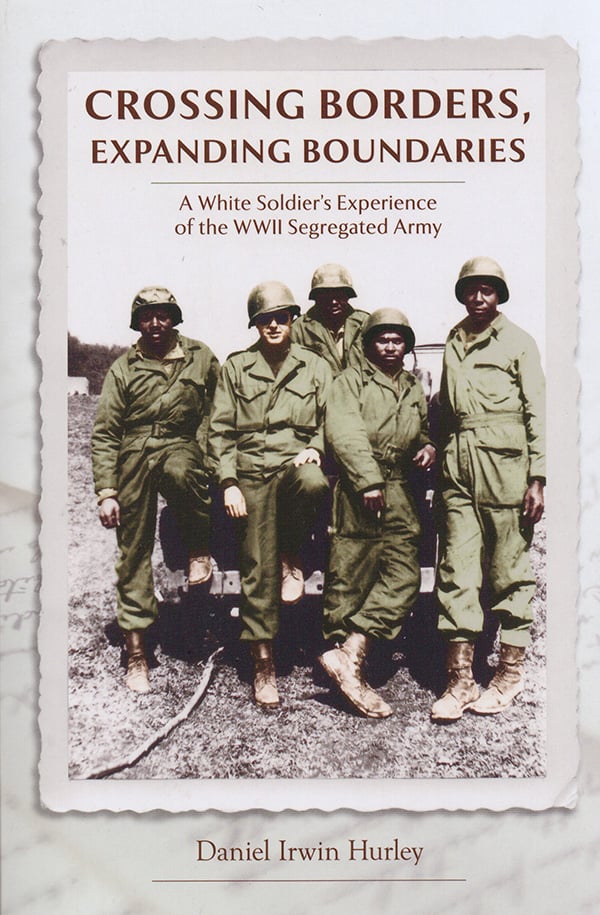


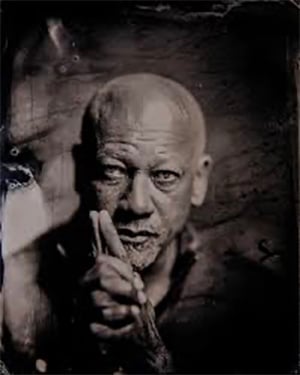

Thanks, Capt. Don for an interesting gaze into the steamboat deckhand’s world of work. Put tow knees on the bow of that steam (or today’s diesel) boat and add a fleet of finicky barges in tow and the deckhand’s work life takes on a whole other labor-intensive realm.
Another interesting article. I started out in the Coast Guard out of boot camp as a “Deckie” on an ocean going Patrol Cutter. We used manmade material for our mooring and towing lines. I did see that British naval vessels at the time I served, used natural material for both lines and fenders. I appreciate Capt. Sanders showing these items used to secure riverboats.
Thanks for the comments. “Sooge” or “Soogie” are terms once learned are never forgotten.
How great to have river terms explained in a way that river & shore folks can understand. Yet again, Capt Don brings the minute details of river work to life. .
I’ve helped scrub rails on the Pre-President Carter trip & have a whole new respect for the guys & gals of the deck department..
Thanks for bringing memories & history of the river to life.
I always wondered how to spell sooge. Sometimes I’d be ordered to “soogie” decks, bulkheads whatever.
The only significant difference from my Towboat days as far as vessel care, was the employment of powered paint scraper that had rollers with steel teeth that’d make your hands fall asleep while using it, and necessitated the wearing of ear muffs. It definitely gets old paint off a steel bulkhead. Thankfully wooden bulkheads required no such drastic methods.
Great article Don.
During my summers on the river we did a lot of scrubbing. I didn’t remember calling it sooging; we did paint the DQ from stem to stern – including a paddle wheel!